To mark the 60th anniversary of the Julius Baer Foundation, we are launching the '60 facts on wealth inequality' series. It sheds light on the causes and far-reaching consequences of wealth disparity – and its impact on individuals, communities, and the social and economic fabric of society.
In this edition, we focus on a critical aspect of wealth inequality: the gender wealth gap, a significant issue worldwide. Globally, men own $105 trillion more in wealth than women, a figure equivalent to four times the size of the US economy. This disparity is not just about the amount of money but also about the ability to build wealth, which is influenced by various factors including economic systems, policies, and social structures.
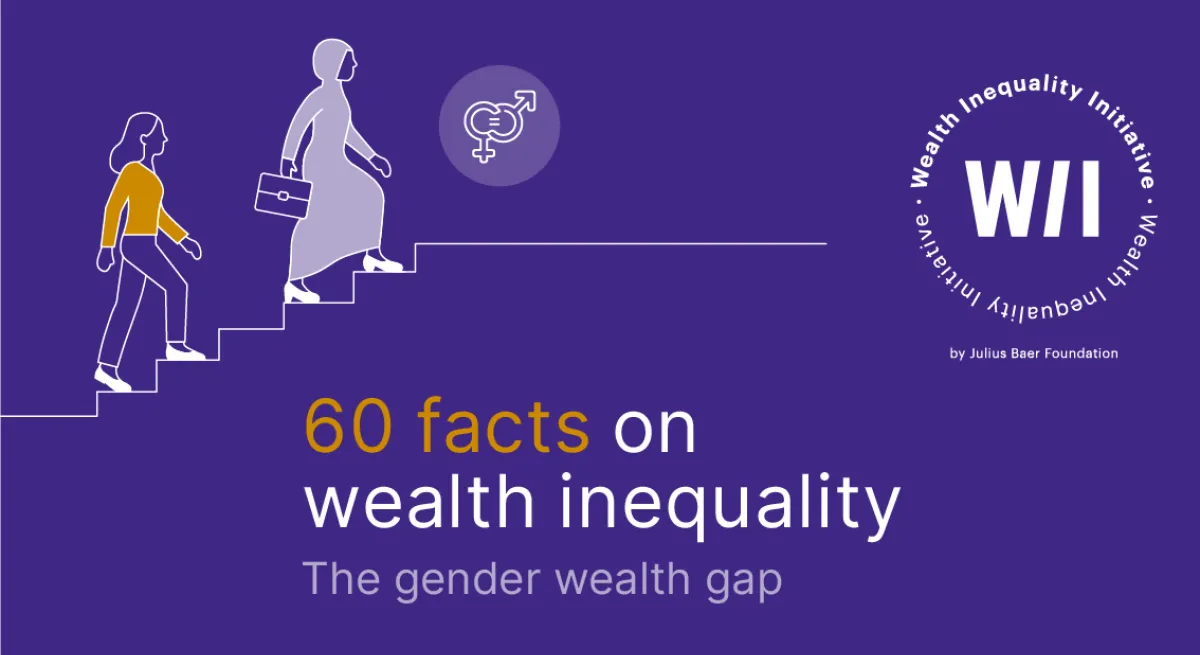
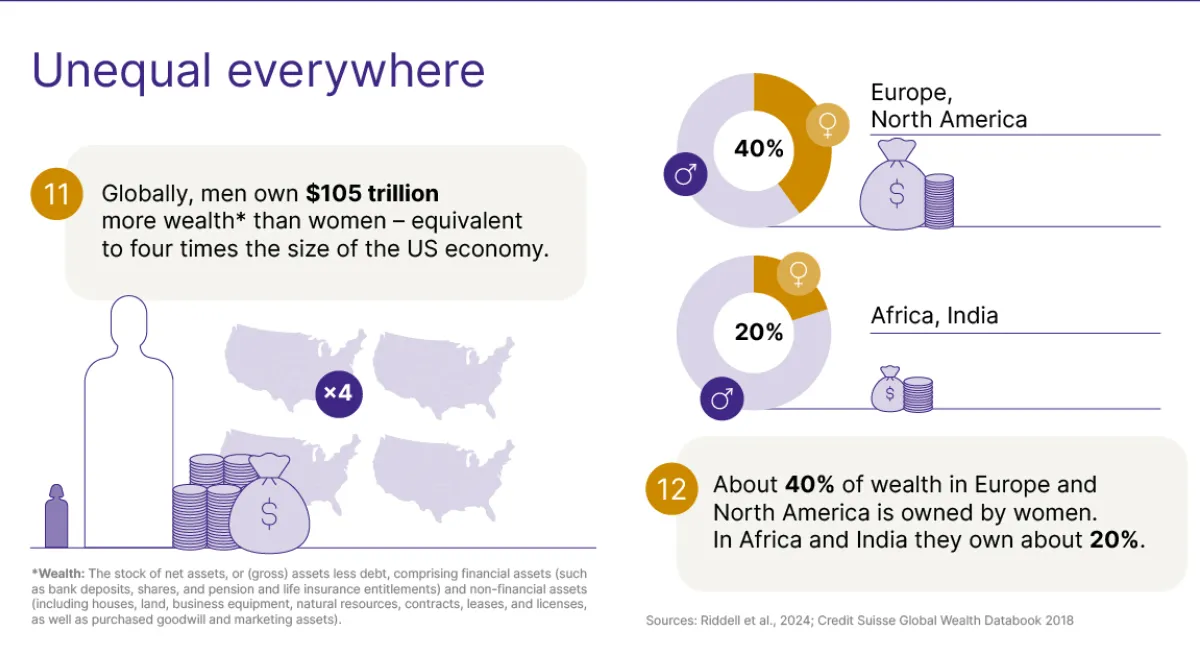
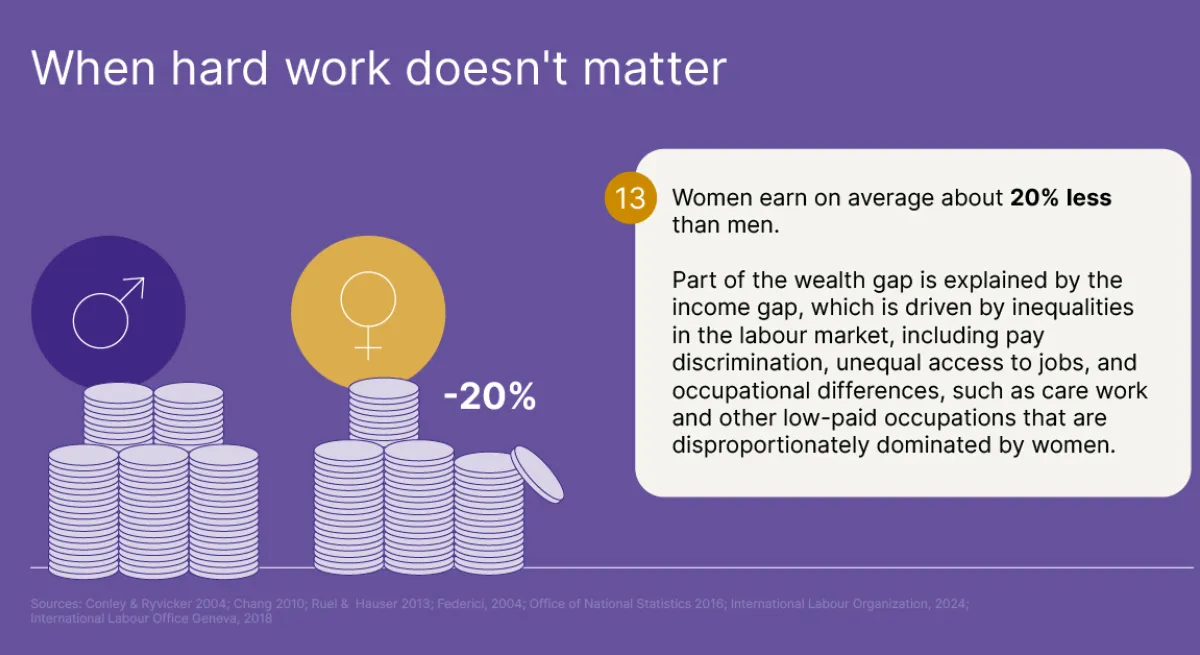
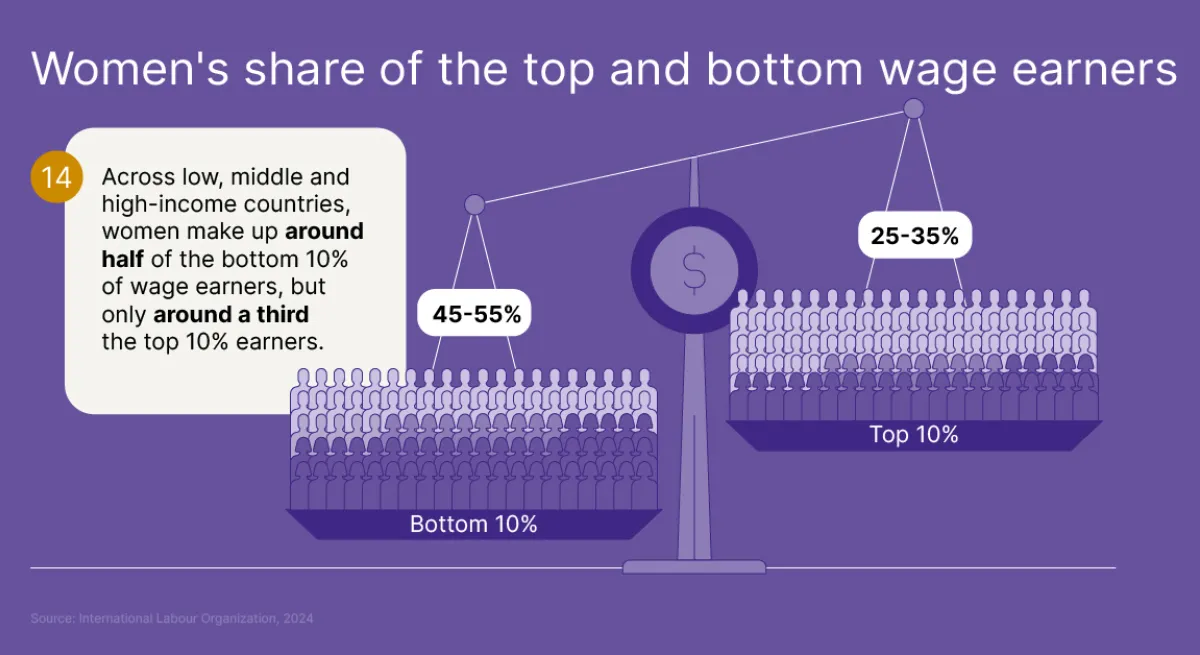
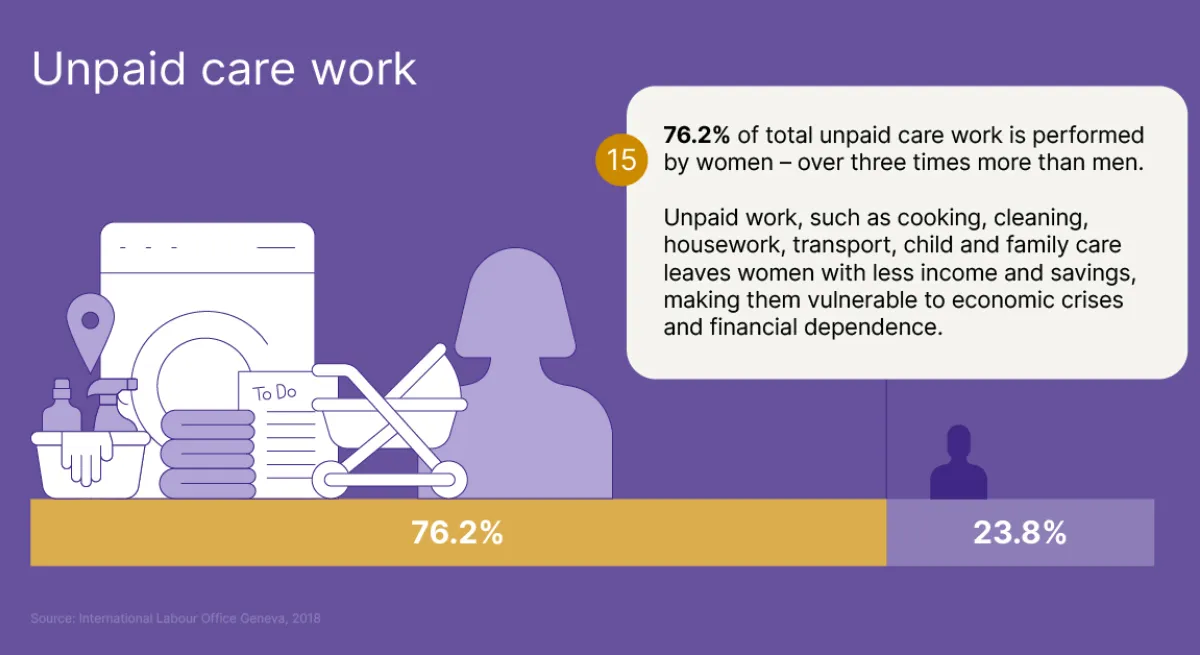
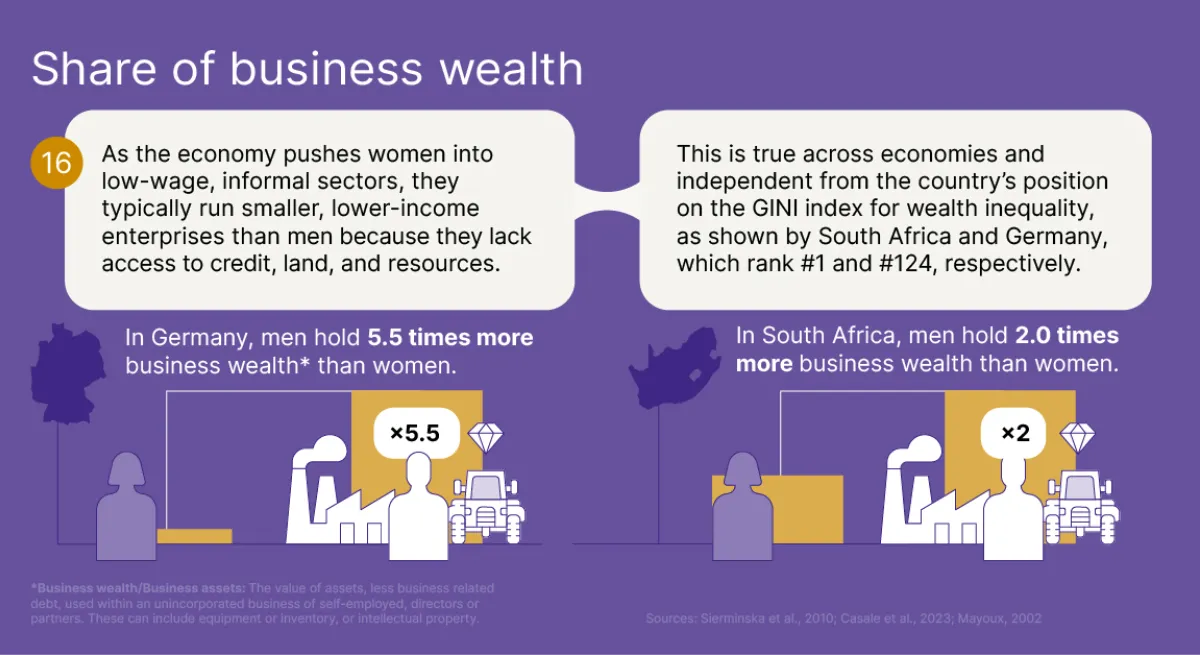
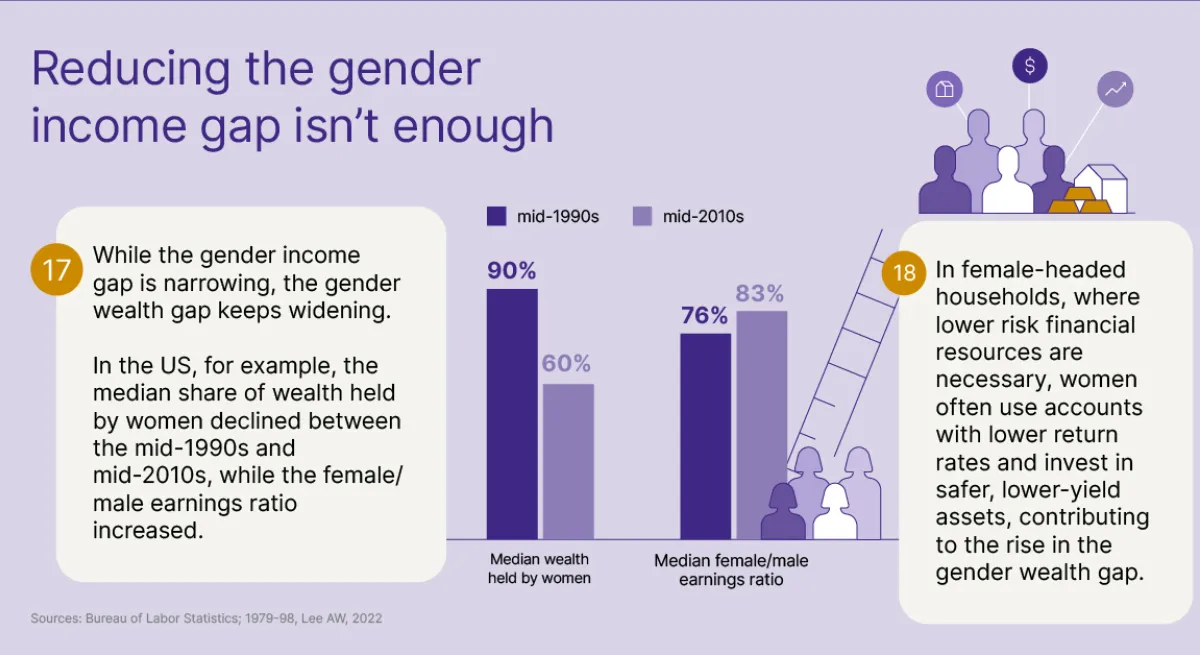
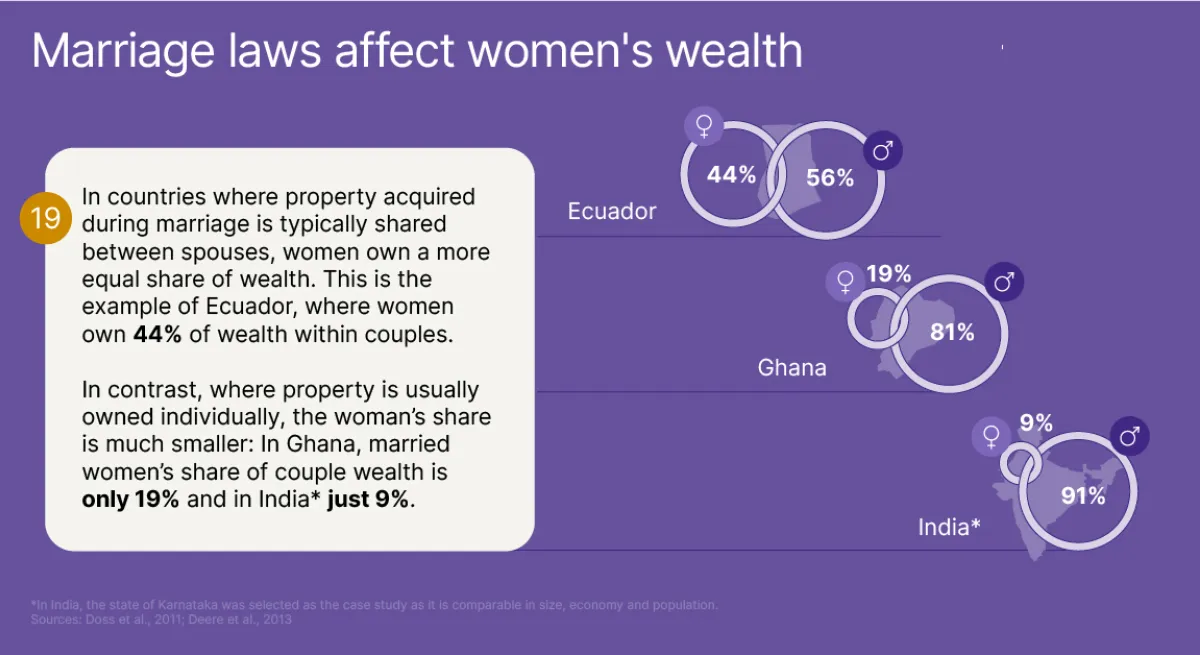
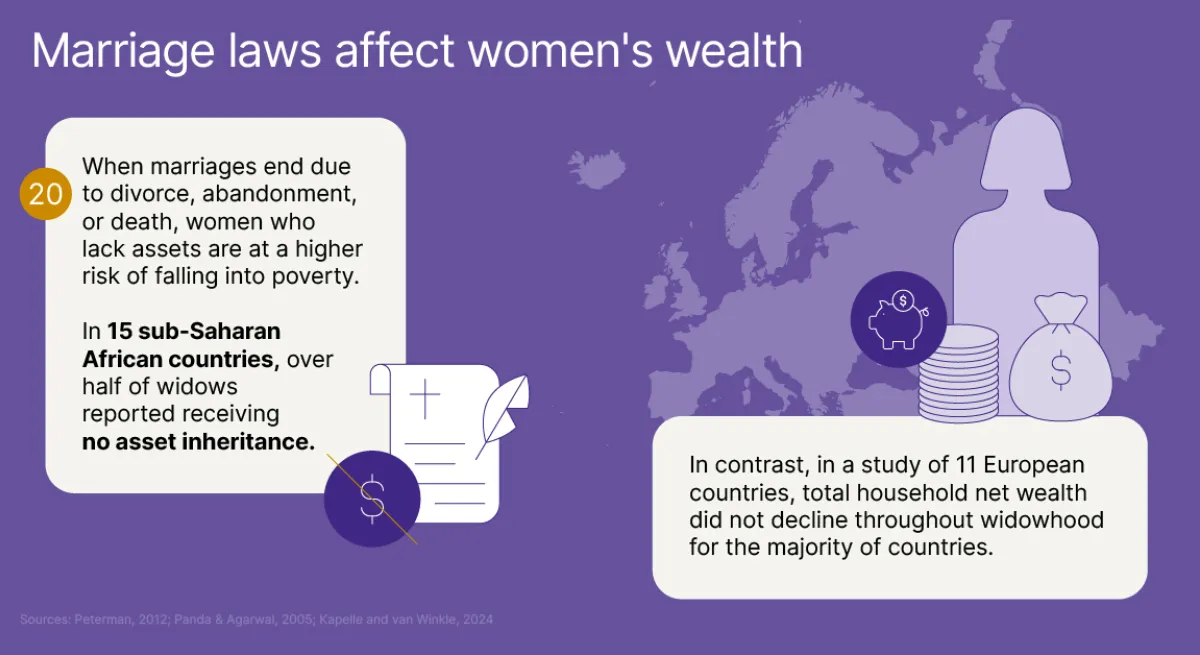
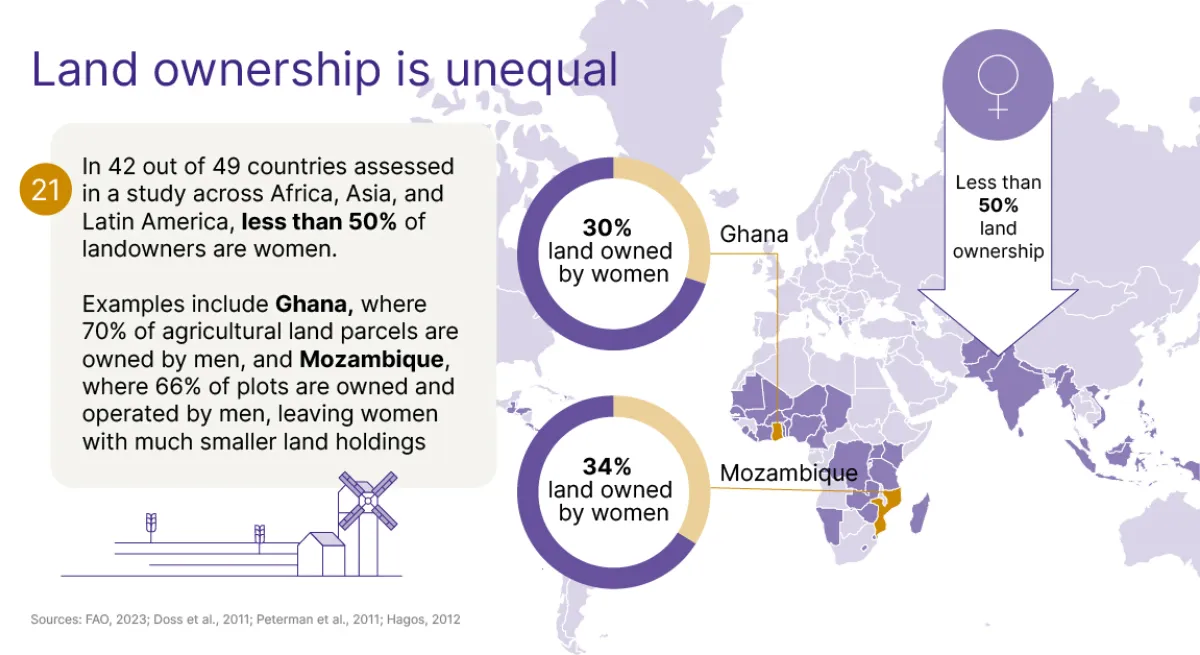
Understanding the gender wealth gap
Research highlights that the gender wealth gap is a multifaceted challenge, with women facing numerous barriers to accumulating wealth. Notably, women make up around half of the bottom 10% of wage earners, but only a small percentage of the top 10% earners. On average women earn 20% less than men, and are overrepresented in lower-paying jobs with precarious working conditions. They also shoulder 76% of unpaid care work, limiting time and opportunities to earn or grow wealth.
Access to financial resources is another major barrier: women often run smaller, lower-income businesses than men because they lack access to credit, land, and resources hindering their ability to accumulate wealth and improve their economic standing.
As data shows, women's share of wealth varies significantly across regions, with about 40% of wealth in Europe and North America being owned by women, compared to only around 20% in Africa and India.
Far-reaching consequences of the gender wealth gap
As illustrated by the facts above, wealth, business ownership, land ownership, and income levels have far-reaching implications beyond their immediate value. They influence the types of education women can access, their housing, and the quality of healthcare they can afford, for example. These factors affect women’s economic independence, the ages at which they marry and have children, as well as their position in families and communities. They also influence the time women have for personal development, such as upskilling, and their access to information, networks, and opportunities that can drive growth.
All these variables are key in securing upward social mobility. In addition, when women are relegated to low-paying jobs with precarious working conditions, this perpetuates the cycle of inequality that they face every day.
What can we do?
Evidence shows that empowering women uplifts entire communities, as their success creates a ripple effect, leading to more economically stable, healthier and better educated families and societies.
Whether through education, quality childcare, financial awareness, land and property ownership, or inclusive entrepreneurship, the projects supported by the Julius Baer Foundation connect groups across the wealth spectrum to collaborate on solutions that enable social mobility and equal opportunities. As part of this approach, tackling the gender inequality challenge is both crucial and instrumental in reducing the wealth inequality gap in the interests of all.
PDF 60 facts on wealth inequality: the gender wealth gap
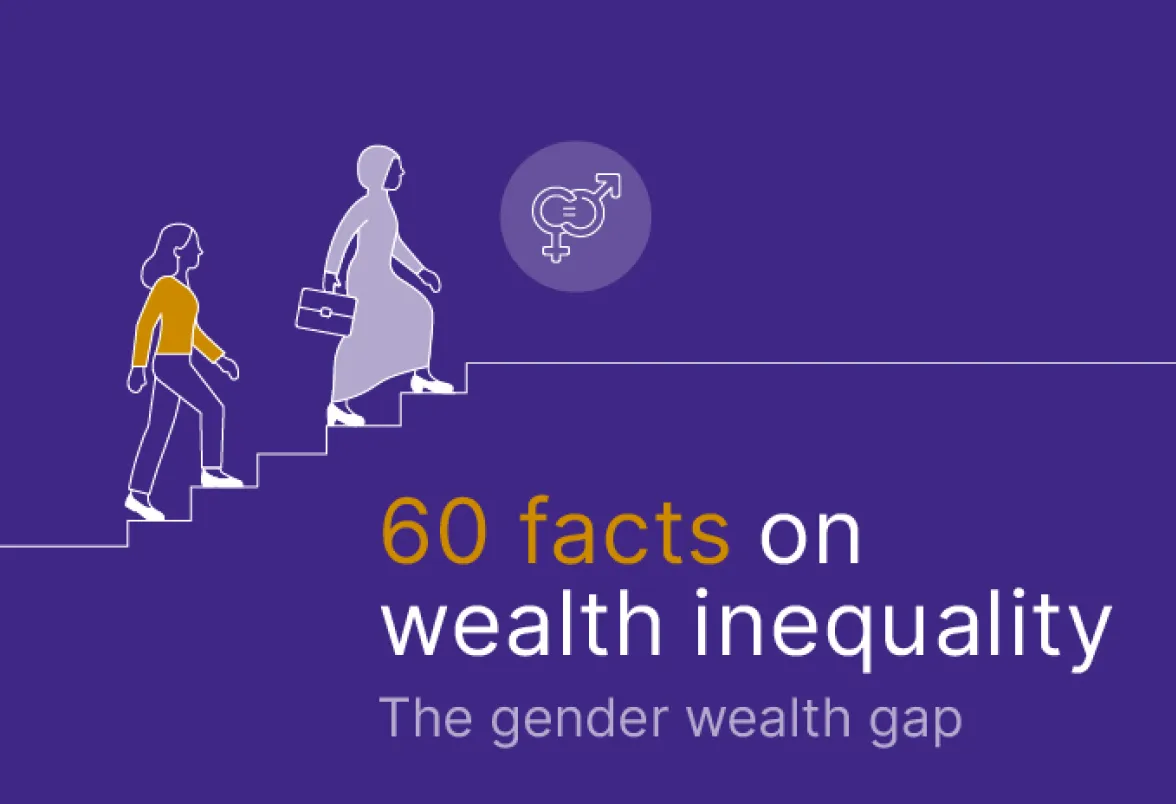
To explore all facts of the second edition, highlighting gender disparities, please download the PDF here:
